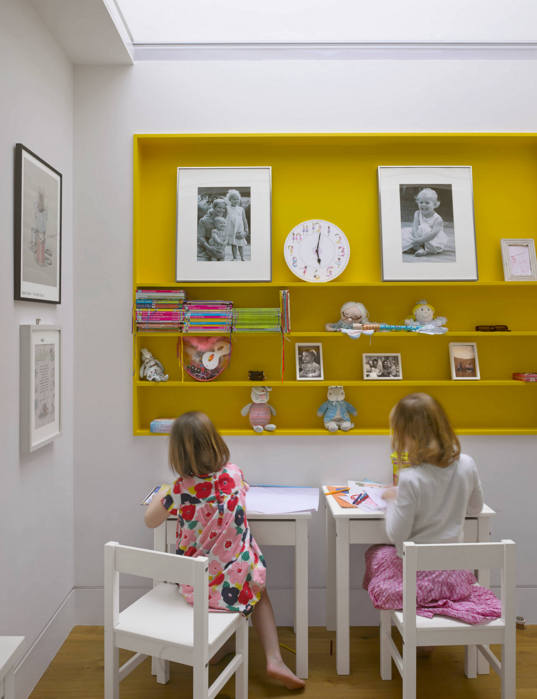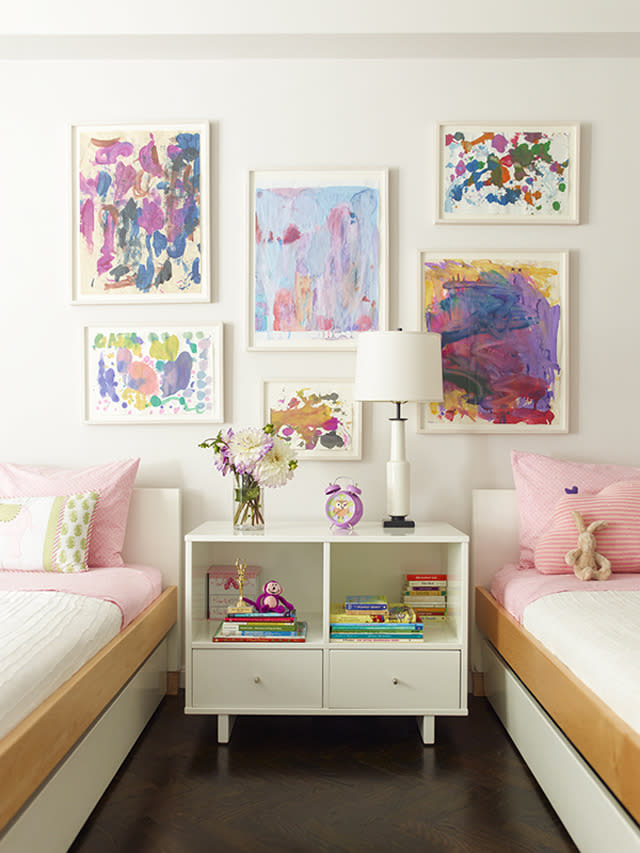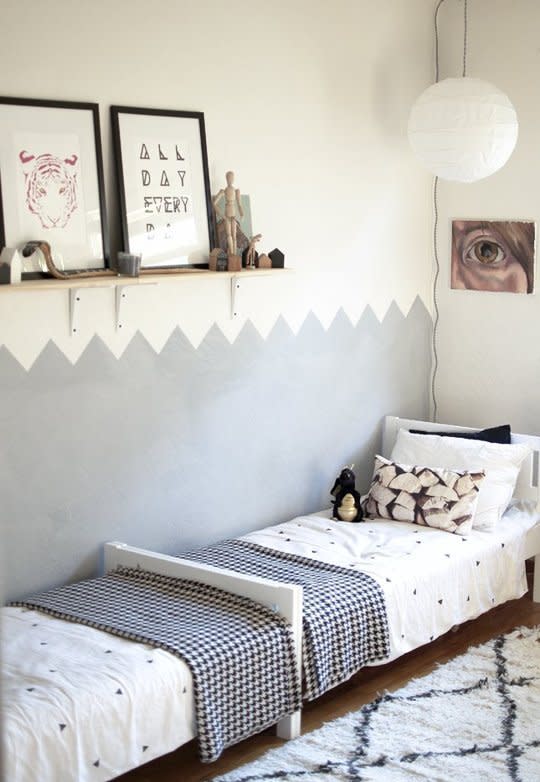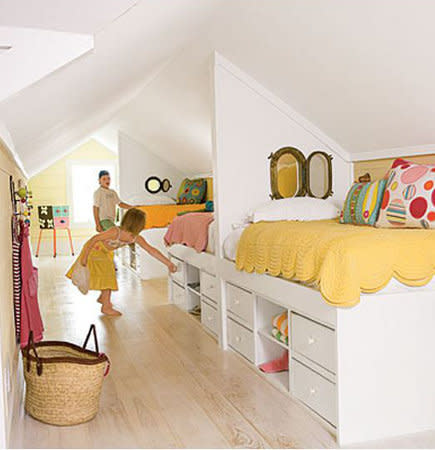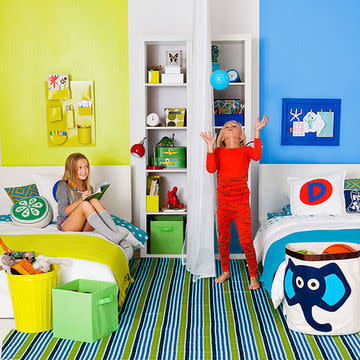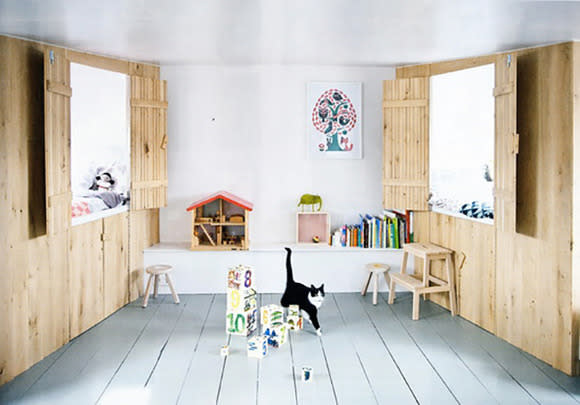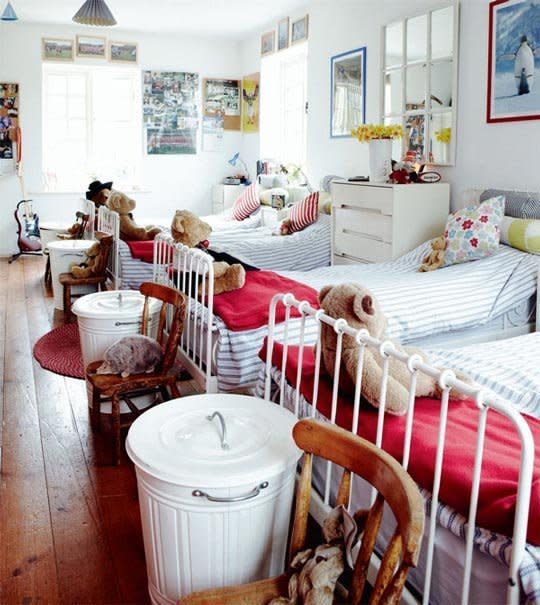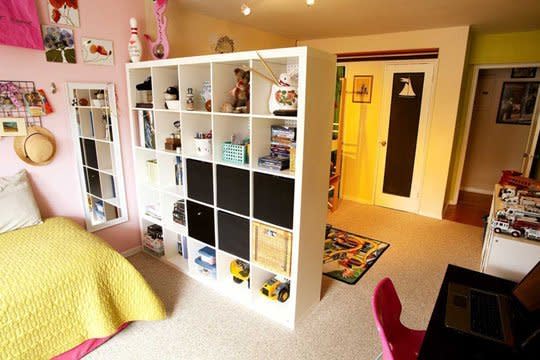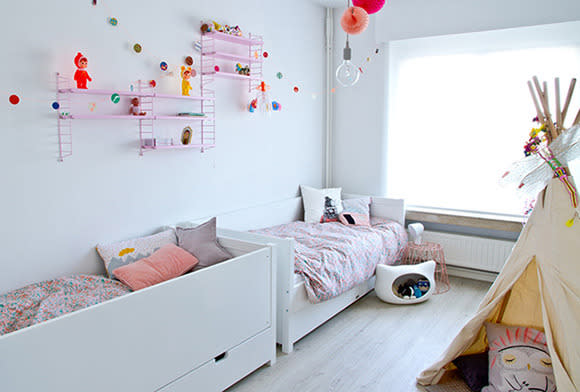Sibling Bedrooms: How to Create an Effective Shared Space
A lot of parents don’t have a choice when it comes to making their children share a bedroom. But sharing space doesn’t have to be a sacrifice on anyone’s part. In fact, some psychologists suggest that sharing a room could improve your kids’ relationship and teach them valuable social skills.
“Children who share a room are learning how to live together, tune in to each other’s feelings, compromise, problem-solve, and defend themselves,” Adele Faber, a parent educator and co-author of Siblings Without Rivalry told Parents magazine. “It’s an experience that brings benefits they can use in future relationships.”
Not only is it a great learning experience, but according to Patricia Dalton, Ph.D., a clinical psychologist and family therapist, sharing a room can be comforting. “When children are young, they gain a feeling of security from another’s presence, and a sibling can be a real comfort at bedtime,” says Dalton.
But as with pretty much everything about parenting, just because it’s good for them, doesn’t mean it’ll be easy. In fact, quite the opposite. When property and play are involved, conflicts will arise, but according to Faber, this is all part of it.
“Siblings should be encouraged to come up with solutions to their problems,” says Faber. “If they get stuck, a parent can step in and offer some ideas. But it’s not just the solution that’s important; it’s the attitude that develops from working things out. The result is a willingness to be flexible and a sensitivity to each other’s feelings.”
The four keys to creating an effective and healthy shared space are including your kids in planning and designing the space (so they feel a sense of ownership and participation), including your kids in setting up some ground rules, eliminating wasted space and carving out zones of privacy.
On the importance of personal space and privacy, designer Susan Salzman, co-author of Rooms to Grow In, told Parents magazine, "If each person has a space, no matter the size, where he can be himself and express who he is, that’s the key to enabling him to respect someone else’s space too.“
Agreeing on some ground rules helps children understand and respect each other’s limits. In an interview with Real Simple magazine, Dr. Susan Bartell, child psychologist, and author of The Top 50 Questions Kids Ask, suggested “having children ask permission to sit on each other’s beds to give them control over their own space. It’s just like asking before entering a room.”
According to Bartell, “The consequences depend on your household, but they should be something that matters to the child–which means different children can have different consequences.”
Frustration can often build in older children who are sharing their space with a much younger sibling. Listen to his or her grievances and consider building shelves that are out of reach of the younger sibling. According to Bartell, “He’ll understand that he’s being respected, and that you’re doing what you can to help him.”
Now that you’re inspired as a parent, click through the slideshow for some inspiring designs that’ll get you ready to pull out the paint and get creative.
More from Yahoo Makers:
Swoon Over This Toy Kitchen Makeover
15 Clever Candy-Free Valentines Your Kids Will Love
12 Organizing Tips to Tame Your Closet
Let Yahoo Makers inspire you every day. Join us on Facebook,Twitter, Instagram, and Pinterest.
